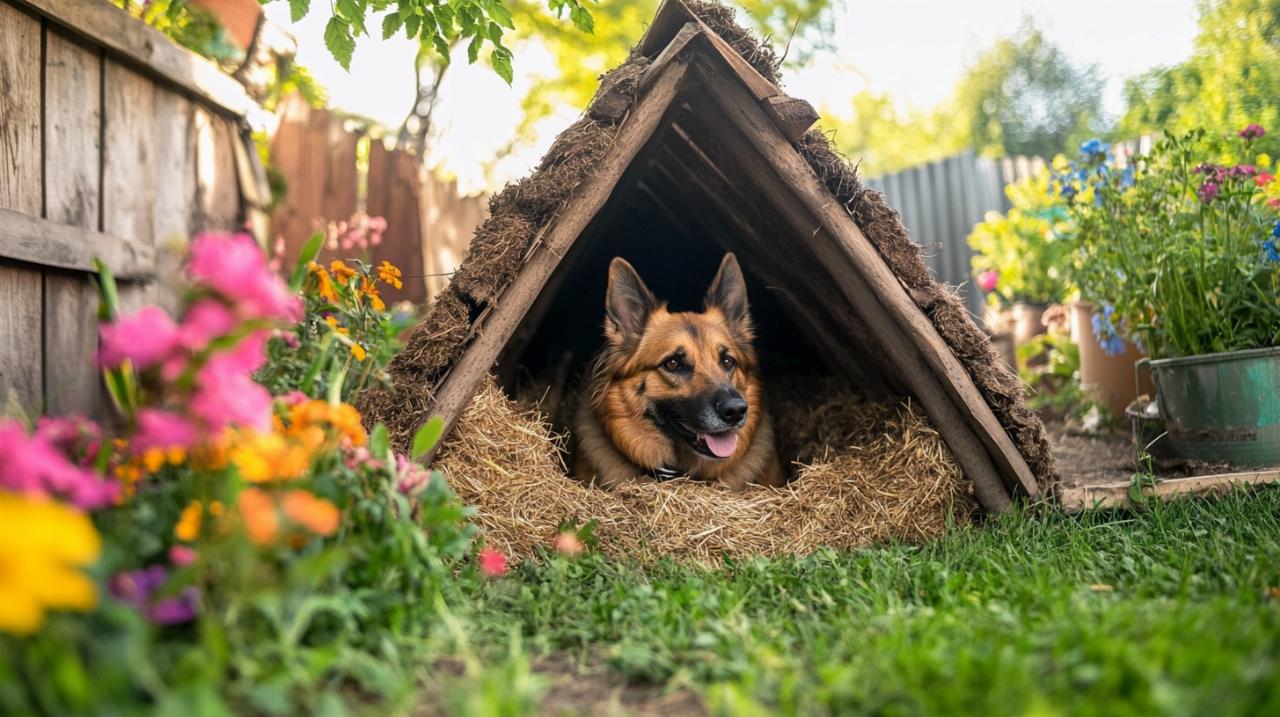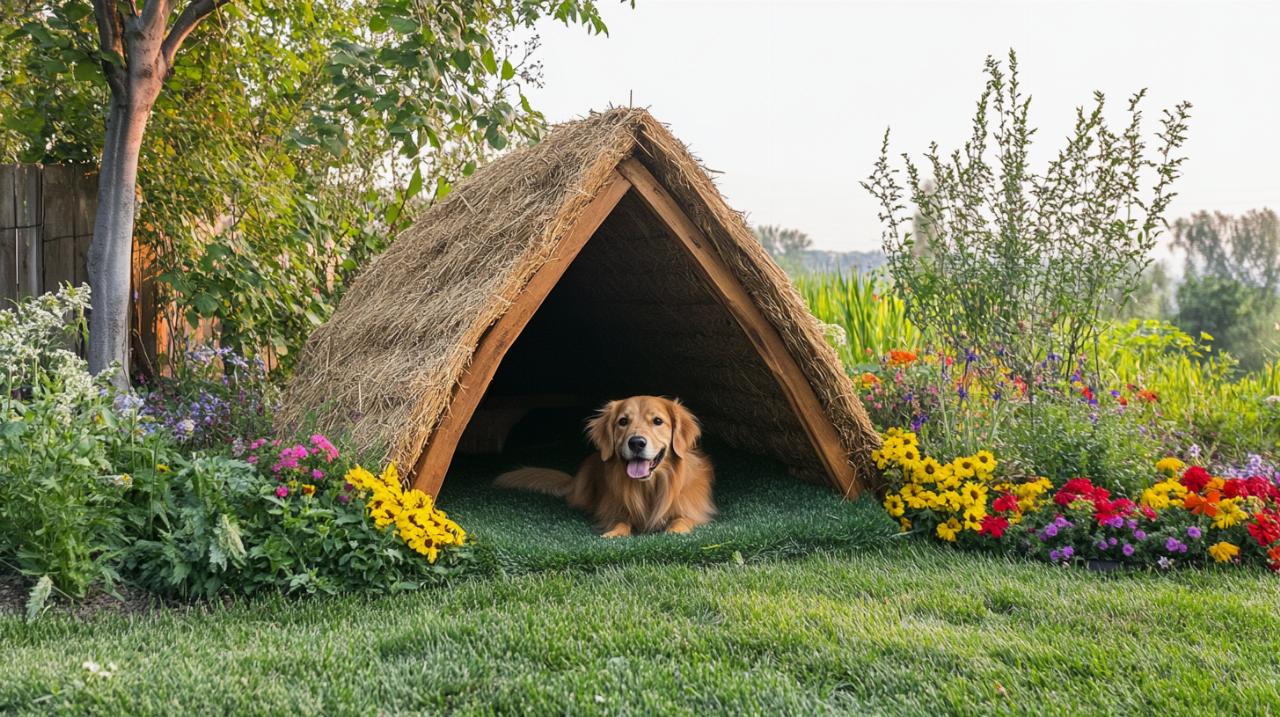Providing your furry companion with a secure and comfortable outdoor haven is one of the most rewarding projects any pet owner can undertake. A well-constructed shelter not only safeguards your dog from the elements but also offers them a dedicated space that promotes their overall wellbeing. Whether you are dealing with the unpredictable British climate or simply want to ensure your pet has a cosy retreat in the garden, building your own kennel allows for complete customisation tailored to your dog’s unique needs. This guide will walk you through the essential materials, design principles, and construction steps necessary to create a robust and weather-resistant home for your beloved pet.
Essential Materials and Design Considerations for Your Dog Shelter
Selecting the right materials and understanding the fundamental design principles are crucial to ensuring your dog’s outdoor shelter stands the test of time and provides maximum comfort. The choices you make at this stage will directly impact the durability, insulation, and overall safety of the structure. A thoughtful approach to these considerations will result in a kennel that not only protects your dog from wet weather hazards such as hypothermia, frostbite, and skin infections but also offers a welcoming space they will love to retreat to.
Choosing weather-resistant materials for durability
The foundation of any successful outdoor dog house lies in the materials you choose. Wood remains a popular option due to its excellent thermal insulation properties, which help maintain a comfortable temperature inside the kennel regardless of external conditions. However, timber does require regular maintenance to prevent rot and damage from moisture. Sealing plywood with appropriate weather-resistant treatments is essential to extend its lifespan. For those seeking a low-maintenance alternative, plastic offers impressive weather resistance and is remarkably easy to clean, making it a practical choice for busy households. Metal and composite materials also present viable options, each bringing their own set of advantages in terms of strength and longevity.
When it comes to roofing, bitumen roofs provide superior protection against rain, snow, and sun, ensuring the interior remains dry and comfortable. Coupling this with tar paper and roofing shingles creates a multi-layered defence against the elements. Vinyl siding is another excellent choice for the exterior, offering both aesthetic appeal and robust protection from moisture. By carefully selecting these weather-resistant materials, you lay the groundwork for a kennel that will endure the harshest conditions while keeping your pet safe and warm.
Proper Sizing and Ventilation for Your Dog’s Comfort
Size considerations are paramount when planning your dog shelter. The structure must be spacious enough for your dog to stand, turn around, and lie down comfortably without feeling cramped. A general rule is to add approximately 12 inches to your dog’s length, height, and width to determine the ideal dog house dimensions. For those with multiple dogs, a double dog kennel design provides ample space for each pet while promoting socialisation and strengthening bonds between them. It is advisable to measure your dogs carefully and allow for an additional 20 percent more space for medium and large breeds to ensure they have room to move freely.
Ventilation is equally critical to prevent moisture buildup, which can lead to mould growth and an unhealthy environment. Incorporating ventilation holes near the roof allows for proper air circulation while maintaining a comfortable temperature inside. These openings should be strategically placed to maximise airflow without creating drafts that could cause discomfort. A raised doorway also helps to keep rainwater and debris out, further protecting the interior. By balancing size and ventilation, you create a shelter that is both functional and conducive to your dog’s health and happiness.
Step-by-Step Construction Guide for Building a Robust Kennel

With your materials selected and design considerations in place, the next phase involves the actual construction of the kennel. This process requires careful attention to detail and a methodical approach to ensure every element is properly installed. Following a comprehensive diy dog shelter tutorial will help you navigate each step confidently, from laying the foundation to adding the finishing touches. The goal is to create a structure that is not only visually appealing but also structurally sound and capable of withstanding the rigours of outdoor life.
Creating a Sturdy Foundation and Waterproof Base
The foundation of your dog shelter is the bedrock upon which the entire structure rests. Choosing a safe, dry, and sheltered spot in your garden is the first step, ideally on an elevated structure to prevent water from pooling around the base. Elevating the kennel off the ground also helps to keep the interior dry and free from pests. Constructing a robust platform using treated timber or composite materials ensures long-term stability and resistance to rot. The base should be slightly raised and positioned in a location that is sheltered from wind, receives moderate sunlight, and offers good visibility from your home for easy monitoring.
Waterproofing the base is essential to protect the interior from moisture seeping up from the ground. Applying a waterproof membrane or sealant to the underside of the flooring provides an additional layer of defence against damp conditions. Ensuring proper drainage around the kennel site will also prevent water accumulation during heavy rain. By investing time in creating a sturdy and waterproof foundation, you set the stage for a durable and reliable shelter that will serve your pet well for years to come.
Installing insulation and protective roofing elements
Insulation is a key component in maintaining a comfortable environment inside the dog house, regardless of the season. Rigid foam insulation is a popular choice for its efficiency and ease of installation, while spray foam offers excellent coverage and fills gaps that might otherwise allow drafts. Mineral wool is another option, providing good thermal properties and fire resistance. Some builders even opt for recycled materials such as old carpet to add an extra layer of warmth and comfort. Insulating the floor, walls, and roof ensures that the interior remains cosy during cold winter months and cool during hot summer days.
The roofing materials you select play a vital role in protecting the shelter from the elements. A bitumen roof, as previously mentioned, offers superior weather resistance and longevity. Overlaying this with roofing shingles adds an extra layer of protection and enhances the overall appearance of the structure. Ensuring the roof has a slight slope will facilitate proper water runoff, preventing leaks and water damage. Ventilation near the roof, as discussed earlier, is crucial to prevent moisture buildup and maintain air quality inside the kennel. Adding a heated mat to the interior during colder months provides additional comfort, ensuring your dog remains warm even on the chilliest nights.
Doors are another important feature to consider. A sliding door or a simple hinged door with a raised threshold can help keep out drafts and prevent rain from entering. Some designs incorporate feeding shelves or additional storage for bowls and treats, making the kennel both functional and convenient. Regular maintenance is essential to keep the shelter in top condition. This involves checking for any damage, cleaning out dirt and debris, washing the interior with mild detergent, and drying it thoroughly. By following these steps and paying attention to the finer details, you can create a robust and weather-resistant kennel that will provide your dog with a safe and comfortable outdoor retreat for many years.

